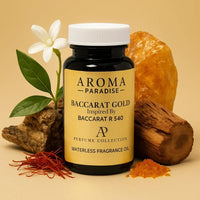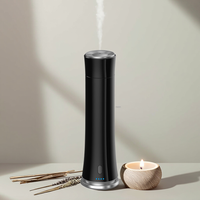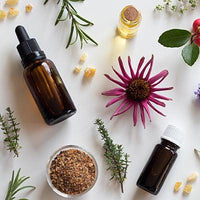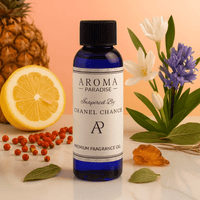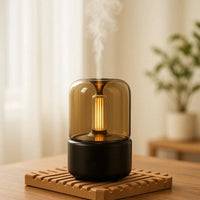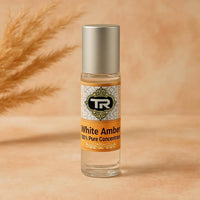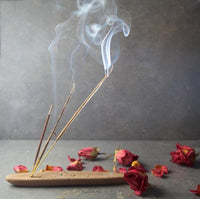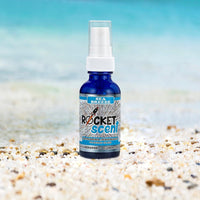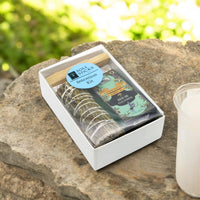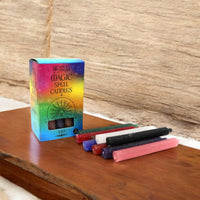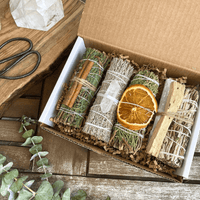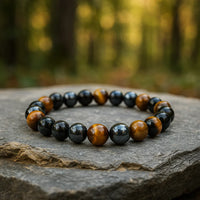
How Fragrance Oils Are Made: The Complete Scent Making Process
Share
Fragrance oils are an essential part of our everyday lives, yet many people don’t realize the complexity, science, and artistry involved in creating these captivating scents. Even if you're using them in candles, soaps, perfumes, or diffusers, understanding how fragrance oils are made can deepen your appreciation for the beautiful aromas that fill your home. In this comprehensive guide, we'll explore what fragrance oils are, the scent making process, and the detailed methods behind crafting these aromatic treasures.
What Are Fragrance Oils?
Before diving into how fragrance oils are made, it’s important to understand what fragrance oils are. Fragrance oils, sometimes called aromatic oils or perfume oils, are concentrated blends of natural and synthetic aroma compounds designed to deliver a specific, consistent scent. Unlike essential oils, which are purely derived from natural plant sources through distillation or cold pressing, fragrance oils may include both natural extracts and carefully engineered synthetic components.
The major advantage of fragrance oils is their versatility. While essential oils may be limited to natural sources, fragrance oils allow perfumers and manufacturers to create a nearly unlimited variety of scents. This means you can enjoy complex blends like "warm vanilla sugar," "fresh linen," or even "rainforest breeze", scents that don’t naturally occur in essential oils alone.
Fragrance oils are stable, long-lasting, and adaptable, making them perfect for use in a wide range of products such as:
-
Candles
-
Soaps and bath products
-
Lotions and skincare
-
Perfumes and colognes
-
Home diffusers and air fresheners
These applications highlight what fragrance oil is used for, which is to deliver consistent, safe, and beautiful aromas across countless industries.
The Ingredients Used in Fragrance Oils
When discussing what fragrance oils are made of, it's essential to understand that fragrance oils consist of multiple components that work together to create a stable, long-lasting scent.
1. Aroma Chemicals
Aroma chemicals are the building blocks of fragrance oils. They can be either natural isolates extracted from plants or synthetic molecules created in laboratories. Aroma chemicals provide the unique top, middle, and base notes of a fragrance.
2. Natural Isolates and Essential Oils
Natural isolates are single aroma compounds extracted from essential oils or other natural materials. They allow perfumers to emphasize specific scent notes without the limitations of whole essential oils. In many blends, essential oils are also included to add depth and natural authenticity to the fragrance.
3. Carrier Oils and Solvents
Carrier oils or solvents dilute the concentrated fragrance compounds, making them easier to handle and mix. These carriers also help control the evaporation rate and scent release in applications like candles and diffusers.
4. Stabilizers and Preservatives
Stabilizers ensure that the fragrance remains consistent over time and across various temperatures. Preservatives protect the blend from microbial contamination, especially in water-based products like lotions or sprays.
By combining these ingredients, skilled perfumers masterfully engineer blends that captivate the senses and fulfill the varied needs of customers.
The Fragrance Oil Manufacturing Process
Now, let’s explore how fragrance oils are made in detail. The scent making process is a delicate balance of science, art, and precision.
Step 1: Research & Formulation
The process begins with extensive research into market trends, customer preferences, and fragrance inspirations. Perfumers, often called "noses," study various aroma chemicals, essential oils, and natural isolates to create a balanced formula. This phase may involve dozens of test blends and adjustments to ensure the final scent meets both creative and technical goals.
For example, when making fragrance oils like a "lavender vanilla" blend, perfumers must balance sweet, floral, and creamy notes perfectly, so they complement one another rather than clash.
Step 2: Ingredient Sourcing
Once the formula is finalized, high-quality ingredients are sourced from trusted suppliers. Purity, consistency, and sustainability are critical at this stage. Even if using essential oils, synthetic aroma chemicals, or natural isolates, every ingredient must meet stringent quality standards.
In some cases, rare ingredients require special sourcing. For example, if you're learning how to make clove oil for toothaches, you would need high-grade clove bud oil due to its medicinal properties. Similarly, fragrance oil ingredients must be carefully selected for their intended use and safety.
Step 3: Blending & Testing
With the ingredients ready, the blending phase begins. Advanced laboratory equipment precisely measures each component, which are then mixed under controlled conditions. This process ensures a uniform distribution of aroma chemicals and prevents batch variations.
Extensive testing follows, including:
-
Stability tests to ensure longevity.
-
Allergen tests for safety compliance.
-
Performance tests in various applications (candles, diffusers, lotions).
These tests ensure that the fragrance performs reliably whether it's used in a home diffuser or a luxury soap.
Step 4: Maturation
Much like fine wine, some fragrance oils benefit from a maturation period. During this time, the individual scent notes meld and stabilize into a harmonious blend. This stage enhances the depth, complexity, and smoothness of the fragrance.
Step 5: Quality Control & Packaging
Finally, the matured fragrance oil undergoes stringent quality control to verify its scent profile, color, and chemical stability. Once approved, it is packaged into containers suitable for wholesale or retail, ensuring it arrives to the customer in perfect condition.
Why Choose Aroma Paradise Fragrance Oils?
At Aroma Paradise, we take pride in producing premium-quality fragrance oils that are crafted with expertise and care. Our products are IFRA-compliant, ensuring they meet global safety standards for use in personal care, home fragrance, and cosmetic applications. We source the finest natural isolates, essential oils, and laboratory-tested aroma chemicals to create safe, long-lasting, and beautiful fragrances.
Our oils are versatile, making them ideal for:
-
Candle making
-
Soap crafting
-
Perfume blending
-
Room sprays
-
Reed diffusers
Whether you're a DIY hobbyist or a professional manufacturer, Aroma Paradise offers the quality and consistency you can trust.
Fragrance Oils vs Essential Oils
A common question many beginners have is: "What’s the difference between fragrance oils and essential oils?" Here’s a clear comparison:
|
Feature |
Fragrance Oils |
Essential Oils |
|
Source |
Synthetic & natural isolates |
Pure plant extracts |
|
Variety |
Nearly unlimited |
Limited to plant availability |
|
Cost |
Usually more affordable |
Often more expensive |
|
Stability |
Highly stable |
Less stable over time |
|
Application |
Wide variety |
Limited (due to sensitivity, toxicity, etc.) |
While essential oils like peppermint, lavender, or tea tree serve therapeutic and aromatherapy purposes, fragrance essential oils offer a broader scent palette perfect for home, cosmetic, and commercial use.
Common Myths About Fragrance Oils
There are many misconceptions about fragrance oils. Let’s debunk a few:
-
Myth: Fragrance oils are 100% synthetic and harmful.
Fact: Many fragrance oils contain natural components, and IFRA-compliant oils are tested for safety. -
Myth: Essential oils are always better than fragrance oils.
Fact: Both have different uses. Fragrance oils offer more variety and stability, while essential oils serve therapeutic roles. -
Myth: Fragrance oils don’t last as long.
Fact: High-quality fragrance oils are specifically formulated for longevity in products like candles and perfumes.
By understanding these myths, you can make informed decisions when choosing oils for your projects.
Frequently Asked Questions
How to make fragrance oil at home?
Making fragrance oil at home requires access to aroma chemicals, natural isolates, and essential oils. You need precise measurements, proper blending techniques, and safety precautions. Most hobbyists begin by experimenting with essential oil blends, but creating professional-grade fragrance oils requires advanced knowledge of chemistry.
What is fragrance oil used for?
Fragrance oils are used in candles, soaps, lotions, perfumes, room sprays, and diffusers. Their versatility, stability, and wide scent variety make them ideal for both personal and commercial applications.
What are fragrance oils made of?
They are made of aroma chemicals (both synthetic and natural), essential oils, carrier solvents, and stabilizers that together create a harmonious and stable scent blend.
How to make clove oil for toothaches?
Clove oil can be made by infusing crushed cloves in a carrier oil like olive oil, allowing it to sit for several days. However, commercially available clove essential oil offers higher potency and consistency for therapeutic use.
Shop Aroma Paradise Fragrance Oils
If you're inspired to explore the beautiful world of fragrance oils, Aroma Paradise offers a wide range of expertly crafted options. From floral and fruity to woody and spicy, our collection has something for every preference and project.
-
✅ Premium ingredients
-
✅ Safe, IFRA-compliant formulations
-
✅ Long-lasting, high-performance scents
Conclusion
Understanding how fragrance oils are made reveals the artistry and precision behind every drop. From the careful selection of ingredients to the exacting manufacturing process, making fragrance oils is both a science and an art. Whether you're crafting candles, making soaps, or simply filling your home with beautiful aromas, fragrance oils provide endless possibilities. With high-quality products like those from Aroma Paradise, you can confidently enjoy the finest fragrances available.


